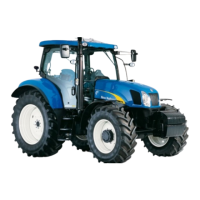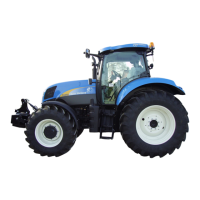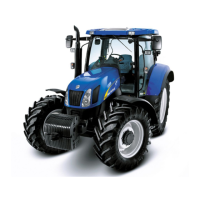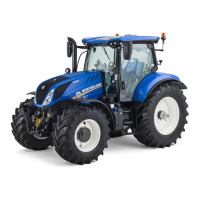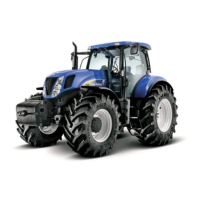SECTION 3 -- FIELD OPERATION
3--135
BALLASTING AND TYRES
GENERAL
Maximum tractor performance is dependent upon
proper ballasting and tyre selection. Maximum
efficiency will be achieved when tractor weight is
correct for the application.
The tyres selected for your tractor must be able to
support the weight of the tractor and equipment and
must also be able to provide adequate traction to
utilize the tractor horsepower and turn it into useful
drawbar horsepower.
Always maintain the correct air pressure in the tyre
to carry the load. Do not over inflate tyres.
NOTE: Radial tyres will work with lower air pressures
and will show up to 20% sidewall deflection or bulge
when correctly inflated.
Factors Affecting Tyre Performance
• Correct air pressure f or the load
• Correct sidewall deflection
• Correct wheel slip
• Correct tyre size f or expected load
• Correct fill of liquid ballast
• Maintaining equal tyre pressure in both tyres on
a given axle
Selecting Ballast
When tractor horsepower loads vary, the optimum
weight of the tractor will change. This means that
ballast may have to be added or removed to maintain
the best tractor performance. Proper ballast will
greatly improve tractor operation and ride.
The amount of ballast required is affected by:
• Weight of tractor
• Soil and traction conditions
• T ype of implement: fully-mounted, semi-
mounted or trailed
• Working speed
• T ractor horsepower load
• T ype and size of tyres
• Tyre pressures
Do not use more ballast than needed. Excess ballast
should be removed when it is not required.
IMPORTANT: Only sufficient weight should be
added to provide traction and stability. Adding more
weight than necessary results in unnecessary loads
being imposed on the tractor and a higher fuel
consumption. When adding weight, adhere to the
maximum tyre capacity loading stated in the tables
commencing on page 3--144. If further information or
assistance is required on tractor weighting consult
your authorised dealer .
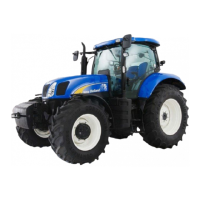
